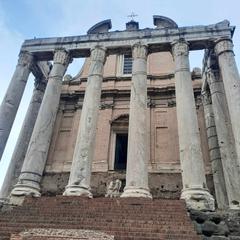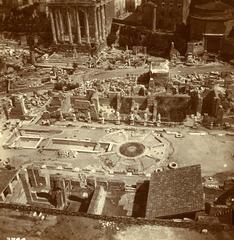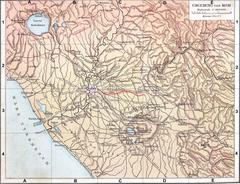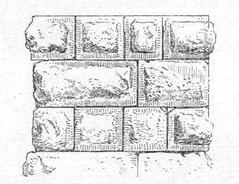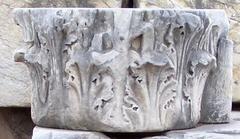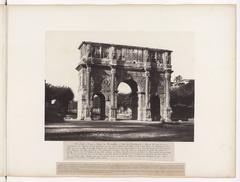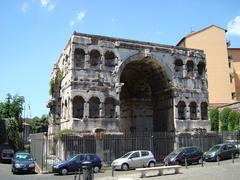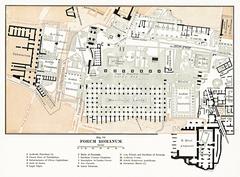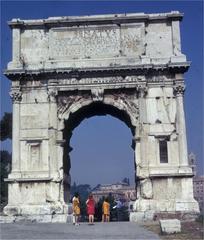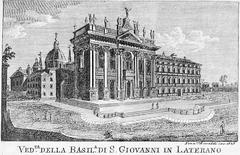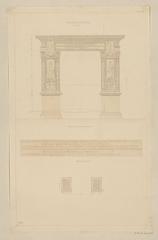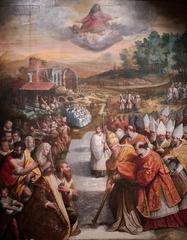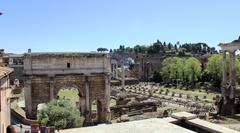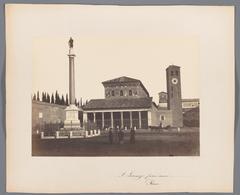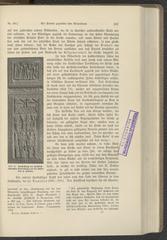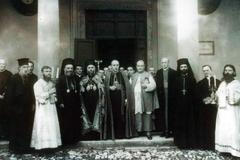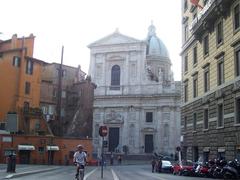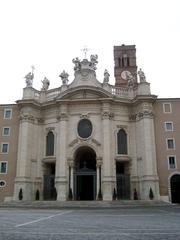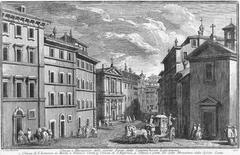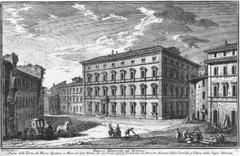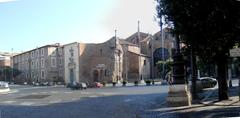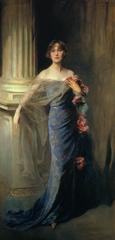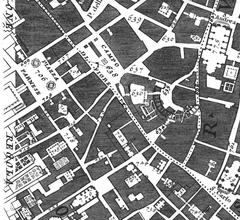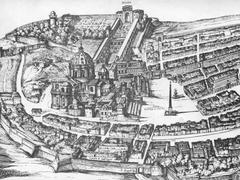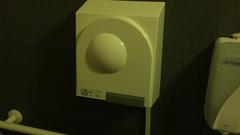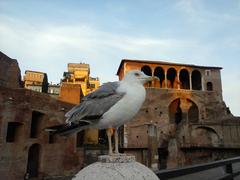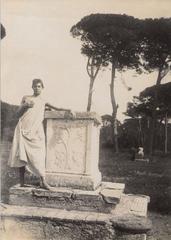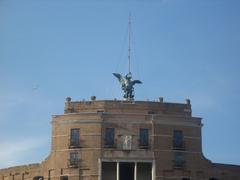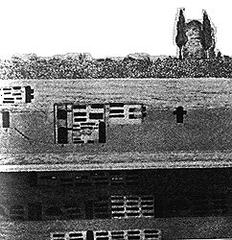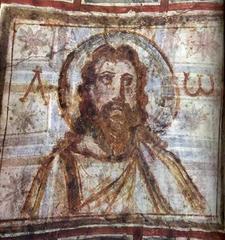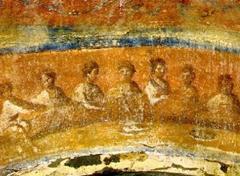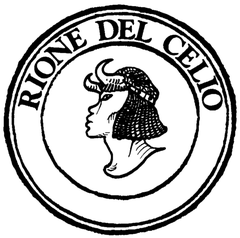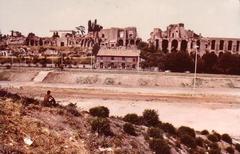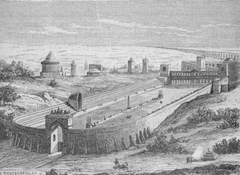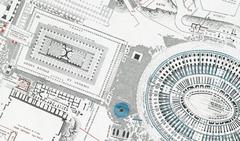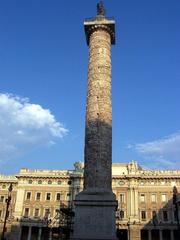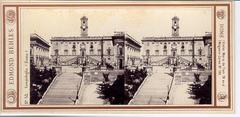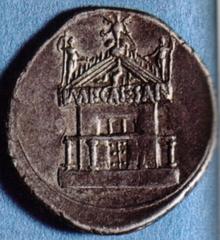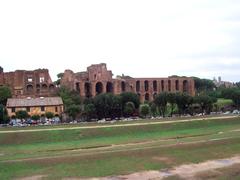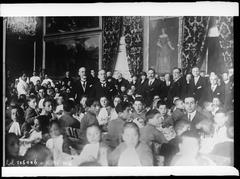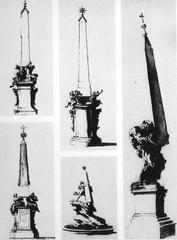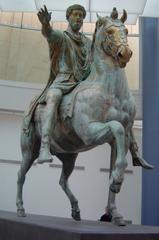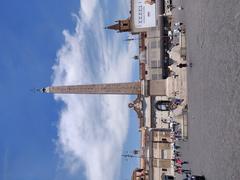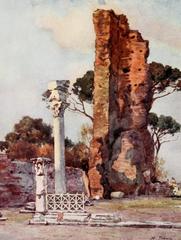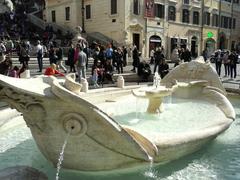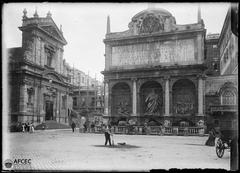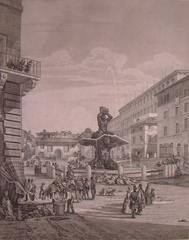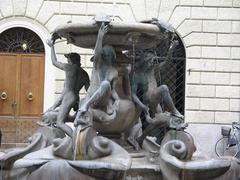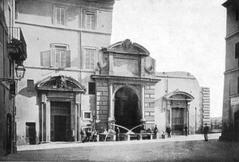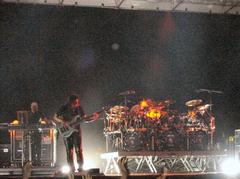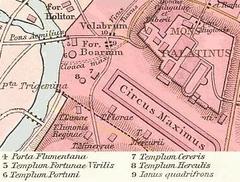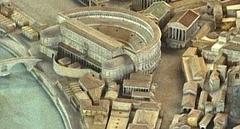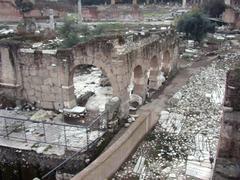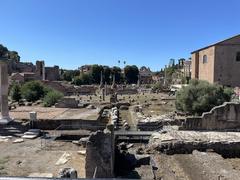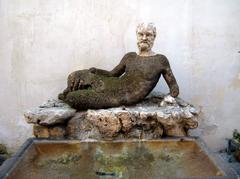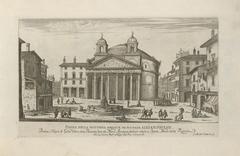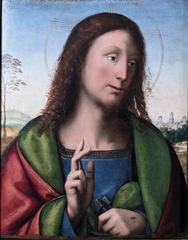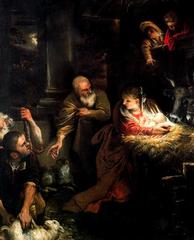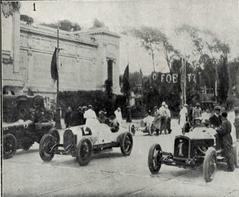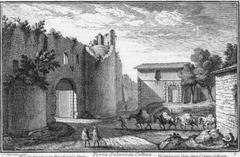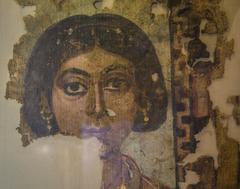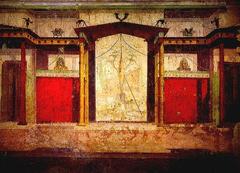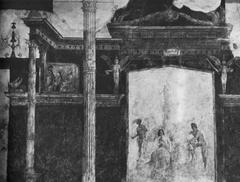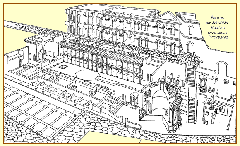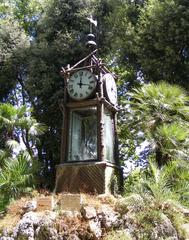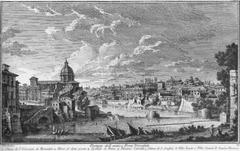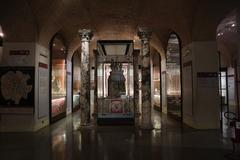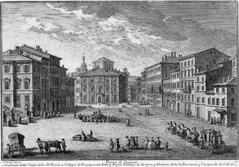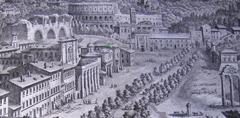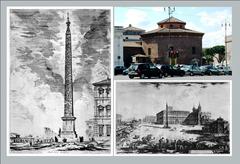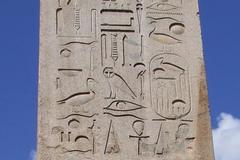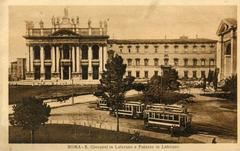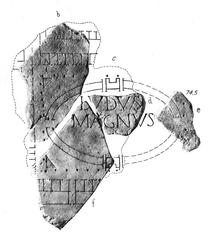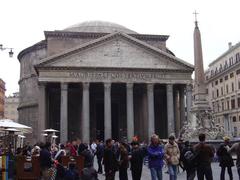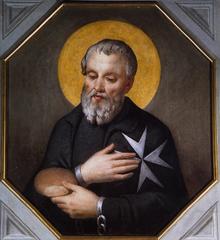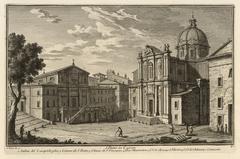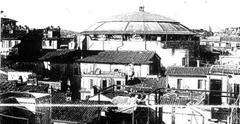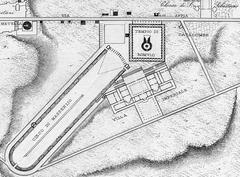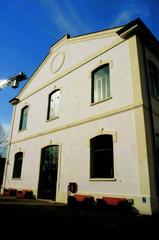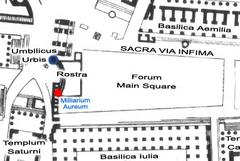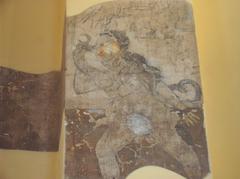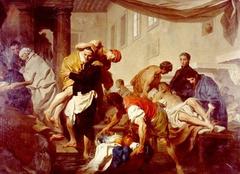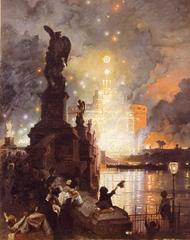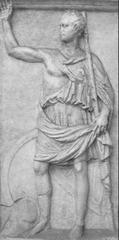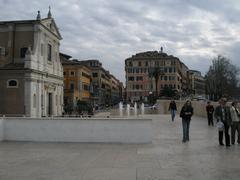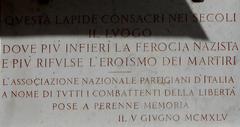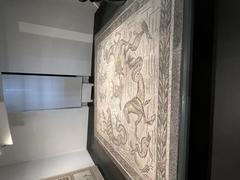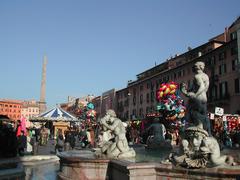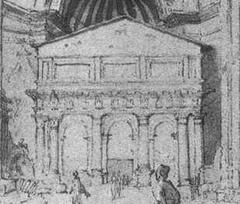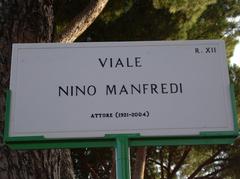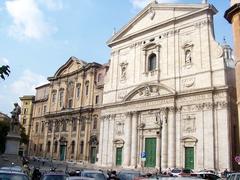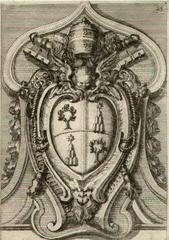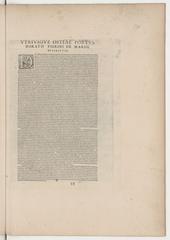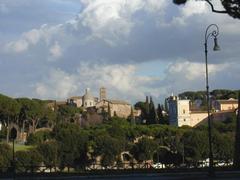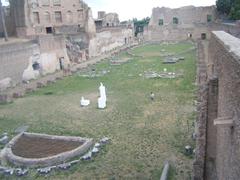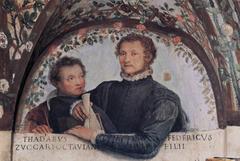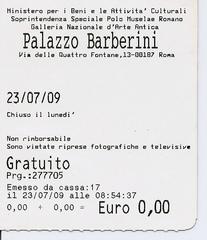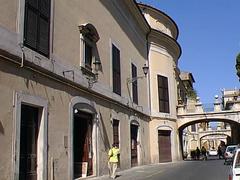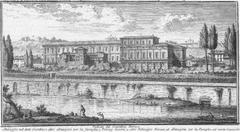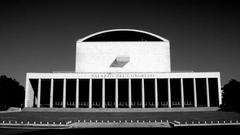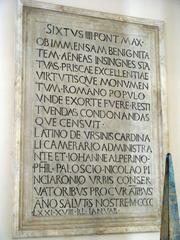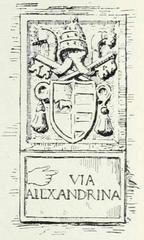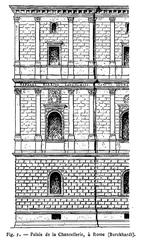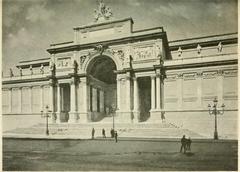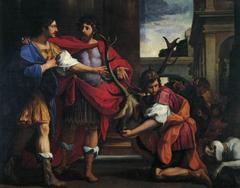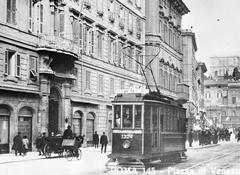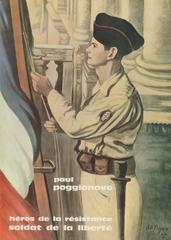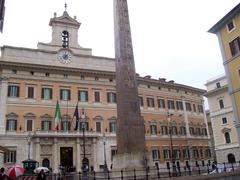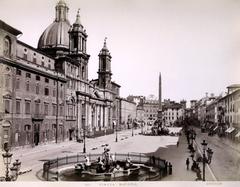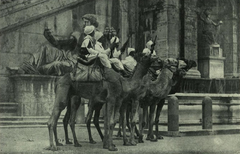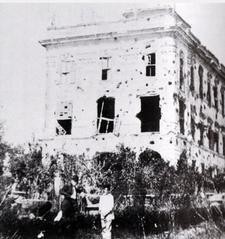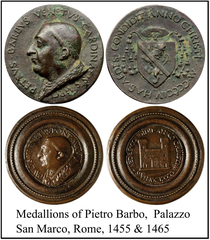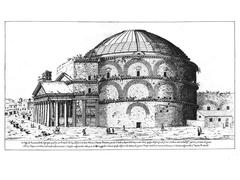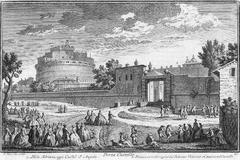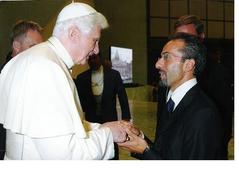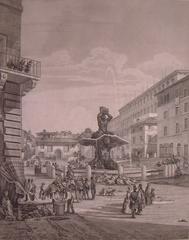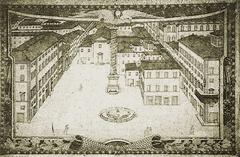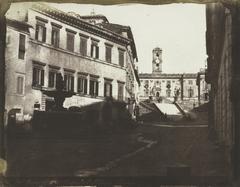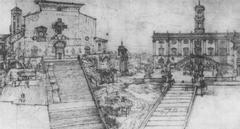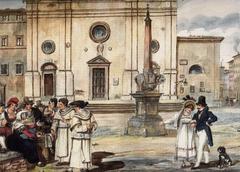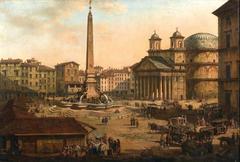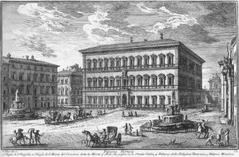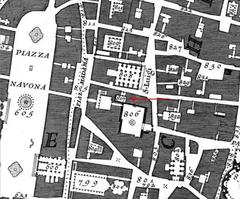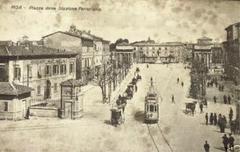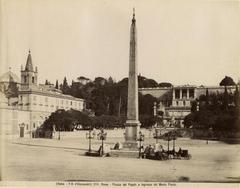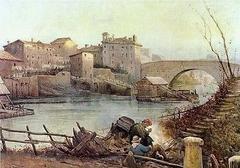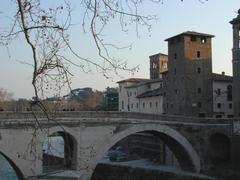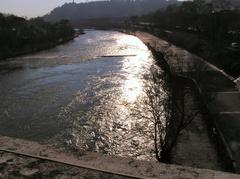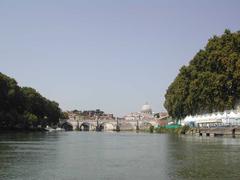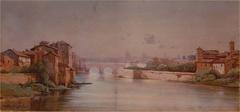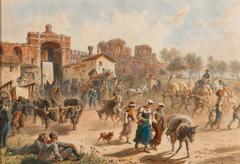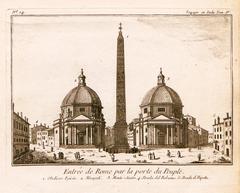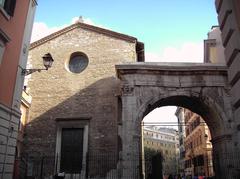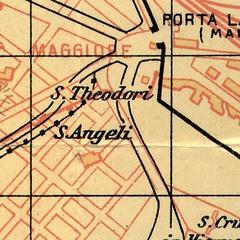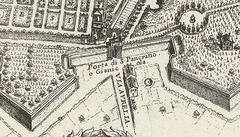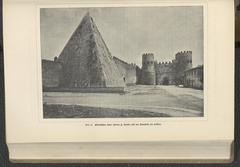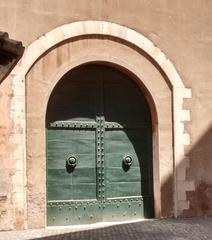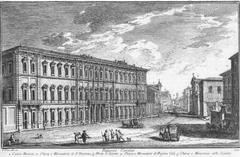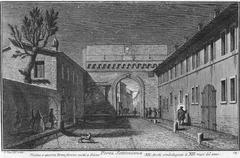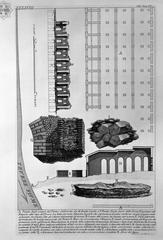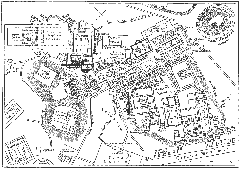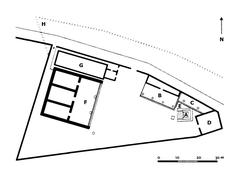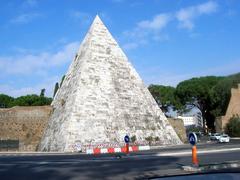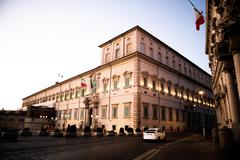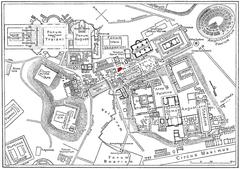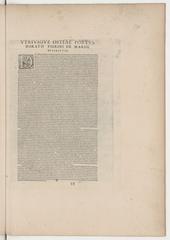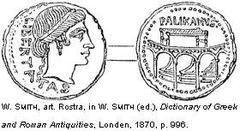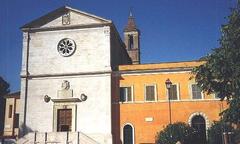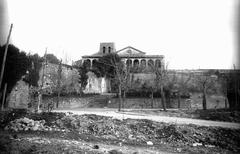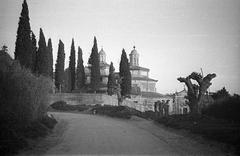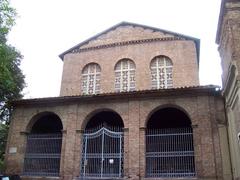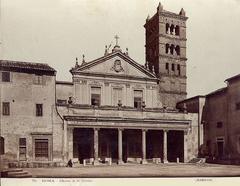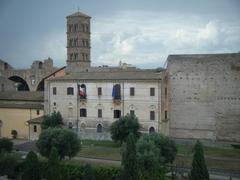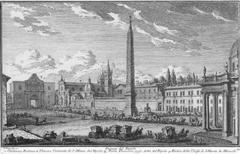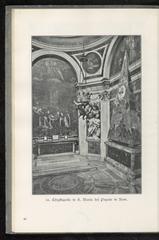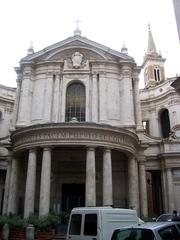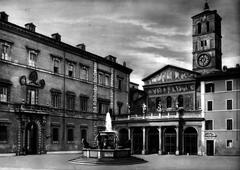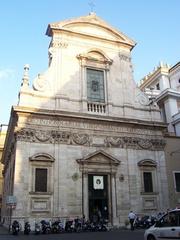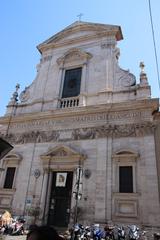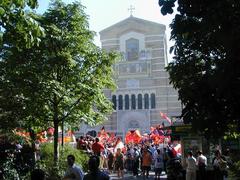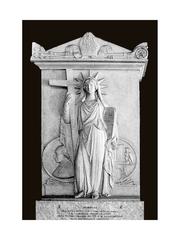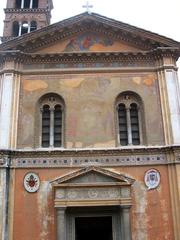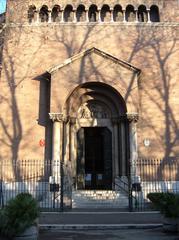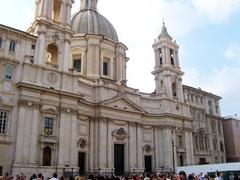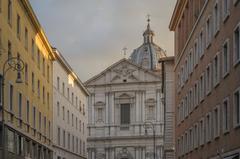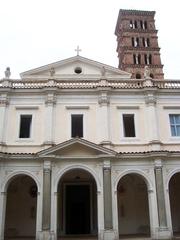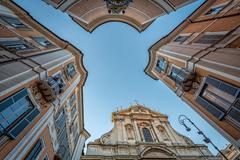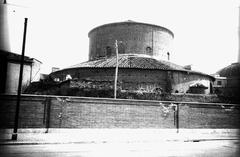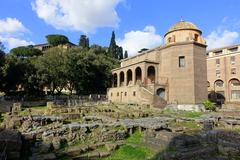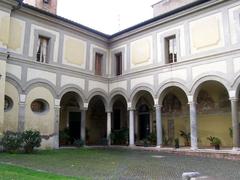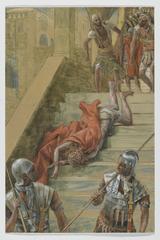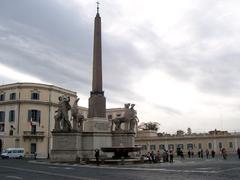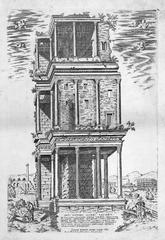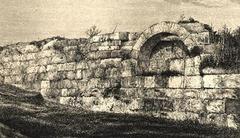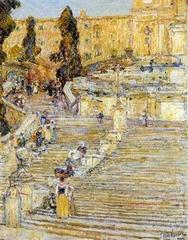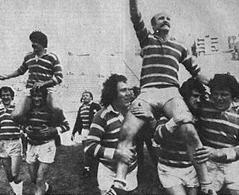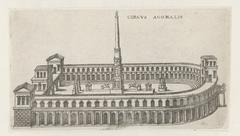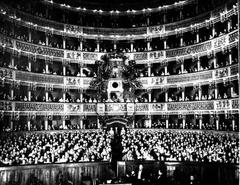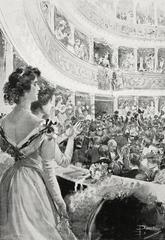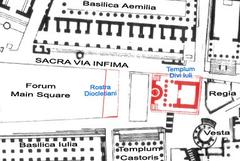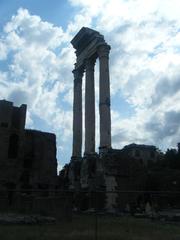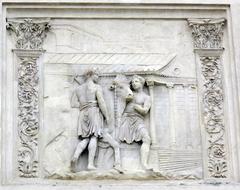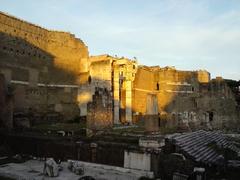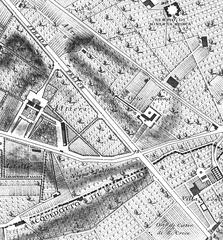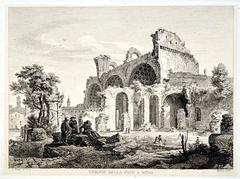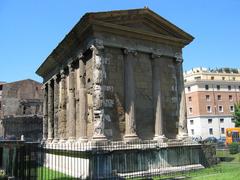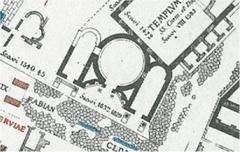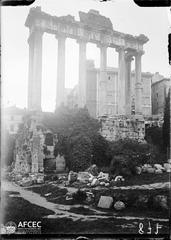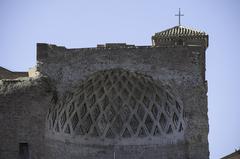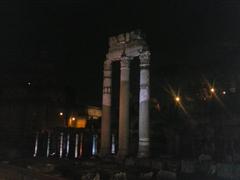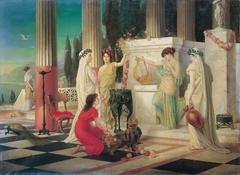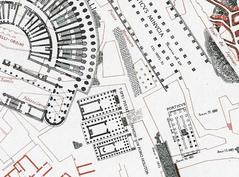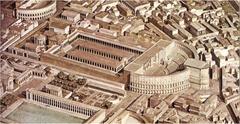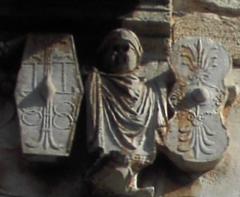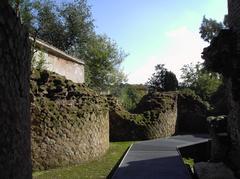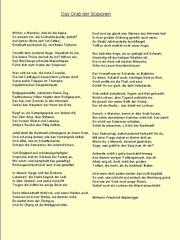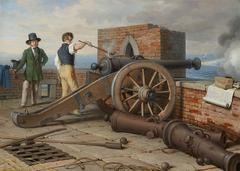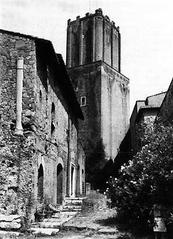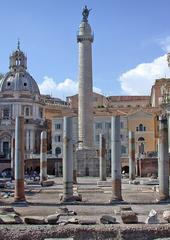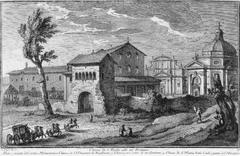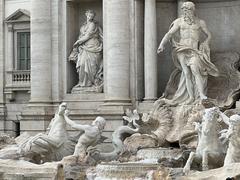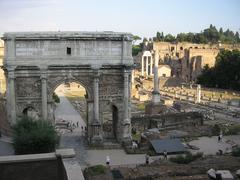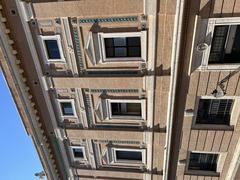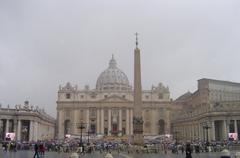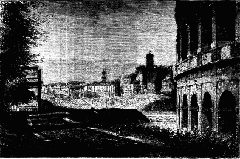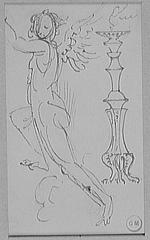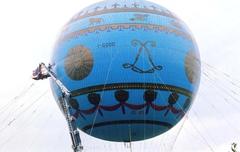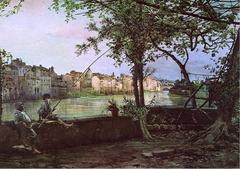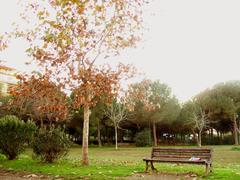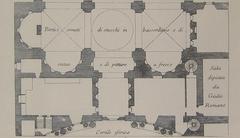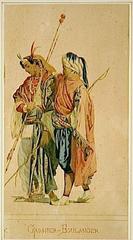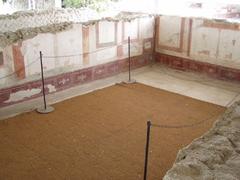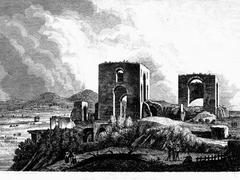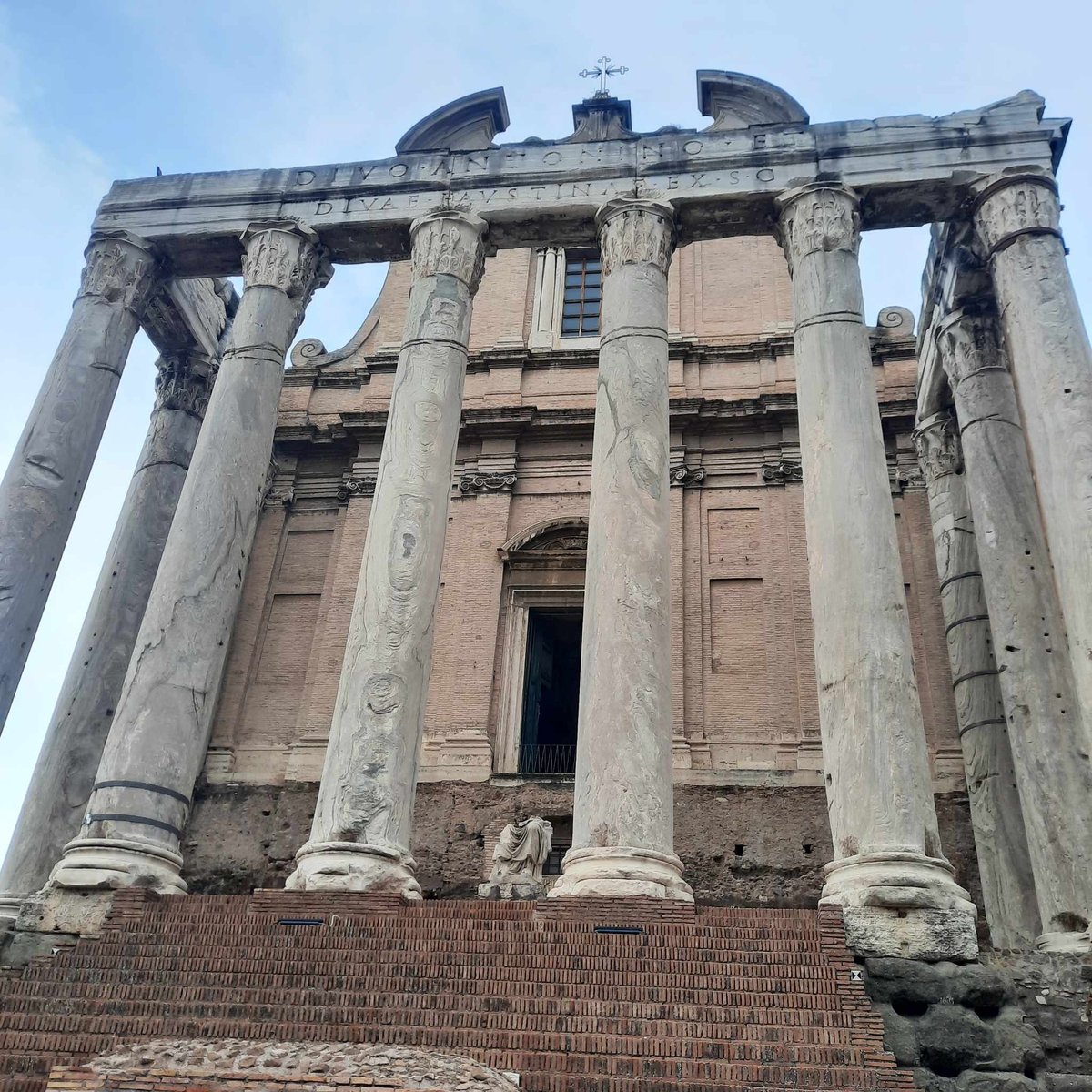
Comprehensive Guide to Visiting San Lorenzo de’ Speziali in Miranda, Rome, Italy
Date: 31/07/2024
Introduction
Nestled within the Roman Forum, the Church of San Lorenzo de’ Speziali in Miranda is one of Rome’s hidden gems, blending ancient Roman and Baroque architectural elements. Originally built as the Temple of Antoninus and Faustina in 141 AD by Emperor Antoninus Pius, this structure was dedicated to his wife, Faustina the Elder, and later to the emperor himself. The ancient temple underwent a significant transformation into a Roman Catholic church in the 7th century, showcasing the adaptive reuse of architecture over centuries. This comprehensive guide will take you through the rich history, architectural features, visitor information, travel tips, and nearby attractions to ensure you make the most of your visit to this fascinating monument (Wikipedia, Turismo Roma).
Table of Contents
- [Introduction](#introductionintroduction)
- [Historical Background](#historical-backgroundhistorical-background)
- [Origins as the Temple of Antoninus and Faustina](#origins-as-the-temple-of-antoninus-and-faustinaorigins-as-the-temple-of-antoninus-and-faustina)
- [Architectural Features](#architectural-featuresarchitectural-features)
- [Conversion to a Christian Church](#conversion-to-a-christian-churchconversion-to-a-christian-church)
- [Baroque Transformation](#baroque-transformationbaroque-transformation)
- [Modern-Day Significance](#modern-day-significancemodern-day-significance)
- [Visitor Information](#visitor-informationvisitor-information)
- [Ticket Prices and Opening Hours](#ticket-prices-and-opening-hoursticket-prices-and-opening-hours)
- [Travel Tips](#travel-tipstravel-tips)
- [Nearby Attractions](#nearby-attractionsnearby-attractions)
- [Accessibility](#accessibilityaccessibility)
- [FAQ](#faqfaq)
- [Conclusion](#conclusionconclusion)
- [Sources](#sourcessources)
Historical Background
Origins as the Temple of Antoninus and Faustina
The structure now known as the Church of San Lorenzo de’ Speziali in Miranda originally began its life as the Temple of Antoninus and Faustina. This ancient Roman temple was constructed by Emperor Antoninus Pius in 141 AD and was initially dedicated to his deceased and deified wife, Faustina the Elder. Faustina was the first Roman empress to have a permanent presence in the Forum Romanum, a testament to her significance (Wikipedia).
Upon the death of Antoninus Pius in 161 AD, his successor, Marcus Aurelius, re-dedicated the temple to both Antoninus and Faustina. This is evidenced by the inscription on the surviving architrave: “Divo Antonino et Divae Faustinae Ex S.C.” which translates to “For the divine Antoninus and for the divine Faustina, by decree of the Senate” (Turismo Roma).
Architectural Features
The temple was constructed using expensive materials but followed a relatively simple design. It stands on a high platform made of large grey peperino tufa blocks. The pronaos, or front porch, features eight monolithic Corinthian columns, each 17 meters (56 feet) in height. These columns are made of cipollino marble from Karystos on the Greek island of Euboea, a costly stone characterized by its white color with pale green or grey veining (Wikipedia).
The rich bas-reliefs of the frieze under the cornice, featuring griffins, acanthus scrolls, and candelabra, were often copied from the sixteenth through the nineteenth centuries. Based on numismatic evidence, the temple was originally fenced off from the Via Sacra, and a large, seated statue of Faustina would have been inside the cella. Fragments of this statue and one of Antoninus Pius, which was added later, were discovered in front of the temple (Wikipedia).
Conversion to a Christian Church
The temple was converted into a Roman Catholic church, the Chiesa di San Lorenzo in Miranda, perhaps as early as the seventh century. However, it is only attested from the eleventh-century work “Mirabilia Urbis Romae.” The name “Miranda” may derive from the Latin word meaning “things worthy of admiration,” possibly referring to the wonderful panorama of the Forum (Turismo Roma).
In 1429 or 1430, Pope Martin V gave the church to the Collegio degli Speziali (Guild of Apothecaries), at the time officially denominated the “Universitas Aromatorium.” The College still uses its adjoining guildhall, which contains a small museum that holds a receipt for medicine signed by Raphael. Side chapels were erected after this date, but the church lacks the usual eastern apse to retain the temple’s structural integrity (Wikipedia).
Baroque Transformation
The church underwent significant changes in the seventeenth century. In 1536, the church was partially demolished, and the side chapels were removed to restore the ancient temple for the visit to Rome of Holy Roman Emperor Charles V. The church, now constrained within the cella of the temple, was remodeled in 1602 by Orazio Torriani, creating a single nave and three new side chapels (Visit Colosseum Rome).
The main altar features a reredos canvas by Pietro da Cortona depicting the Martyrdom of St. Lawrence (1646), while the first chapel on the left hosts the “Madonna and Child with Saints” (1626) by Domenichino. These artworks add to the church’s historical and artistic significance (Wikipedia).
Modern-Day Significance
Today, the Church of San Lorenzo de’ Speziali in Miranda stands as a unique example of a church built within the walls of a Roman temple. It is not unique in this regard, but it is by far the clearest and best example. The massive columns of the original temple now form a protective barrier around the church, with the marble facings long gone but still impressive (Visit Colosseum Rome).
Visitor Information
Ticket Prices and Opening Hours
Access to San Lorenzo de’ Speziali in Miranda is included in the general admission ticket to the Roman Forum. The Roman Forum is open daily from 8:30 AM to 7:00 PM, except on January 1st, May 1st, and December 25th. It is advisable to check the official website for any changes in opening hours or ticket prices before planning your visit. (Visit Colosseum Rome)
Travel Tips
For those planning to visit, it is recommended to use the Metro on either of the MEB and MEB1 lines, getting off at the Colosseo stop. Alternatively, buses numbered 51, 75, 85, 87, and 117 can also get you there. Comfortable walking shoes are recommended as the terrain can be uneven. Accommodation close to the Roman Forum can make your visit more convenient, with several hotels in the vicinity offering easy access to the site (Visit Colosseum Rome).
Nearby Attractions
The Church of San Lorenzo de’ Speziali in Miranda is located near several other notable historical sites. Visitors can easily explore the Colosseum, the Pantheon, and the Spanish Steps, all within walking distance. Each of these sites offers a unique window into Rome’s storied past and should not be missed during your visit.
Accessibility
The Roman Forum, including San Lorenzo de’ Speziali in Miranda, has some accessibility challenges due to the ancient terrain. However, efforts have been made to improve access, including pathways and ramps for visitors with mobility issues. It is recommended to check the Roman Forum’s official website for detailed accessibility information (Visit Colosseum Rome).
FAQ
Q: What are the opening hours for the Church of San Lorenzo de’ Speziali in Miranda? A: The church is accessible when the Roman Forum is open, from 8:30 am to 7 pm daily, except on January 1st, May 1st, and December 25th.
Q: Do I need a ticket to visit the church? A: Yes, a ticket to the Roman Forum is required to visit the Church of San Lorenzo de’ Speziali in Miranda.
Q: How can I get to the church using public transportation? A: You can use the Metro on the MEB and MEB1 lines, getting off at the Colosseo stop, or take buses numbered 51, 75, 85, 87, and 117.
Q: Are there any guided tours available? A: Yes, guided tours of the Roman Forum often include San Lorenzo de’ Speziali in Miranda. Check with local tour operators for more information.
Q: Is the site wheelchair accessible? A: The terrain of the Roman Forum presents some accessibility challenges, but pathways and ramps are available. Check the official website for detailed accessibility information.
Conclusion
In conclusion, the Church of San Lorenzo de’ Speziali in Miranda is a fascinating historical site that offers a unique glimpse into the architectural and cultural transformations that have taken place in Rome over the centuries. Its blend of ancient Roman and Baroque elements makes it a must-visit for anyone interested in the rich history of the Eternal City. For more information and updates, be sure to check our website and follow us on social media.
Sources
- Wikipedia, n.d. Temple of Antoninus and Faustina
- Turismo Roma, n.d. Church of San Lorenzo de’ Speziali in Miranda
- Visit Colosseum Rome, n.d. San Lorenzo de’ Speziali in Miranda
- Lonely Planet, n.d. Chiesa di San Lorenzo in Miranda
